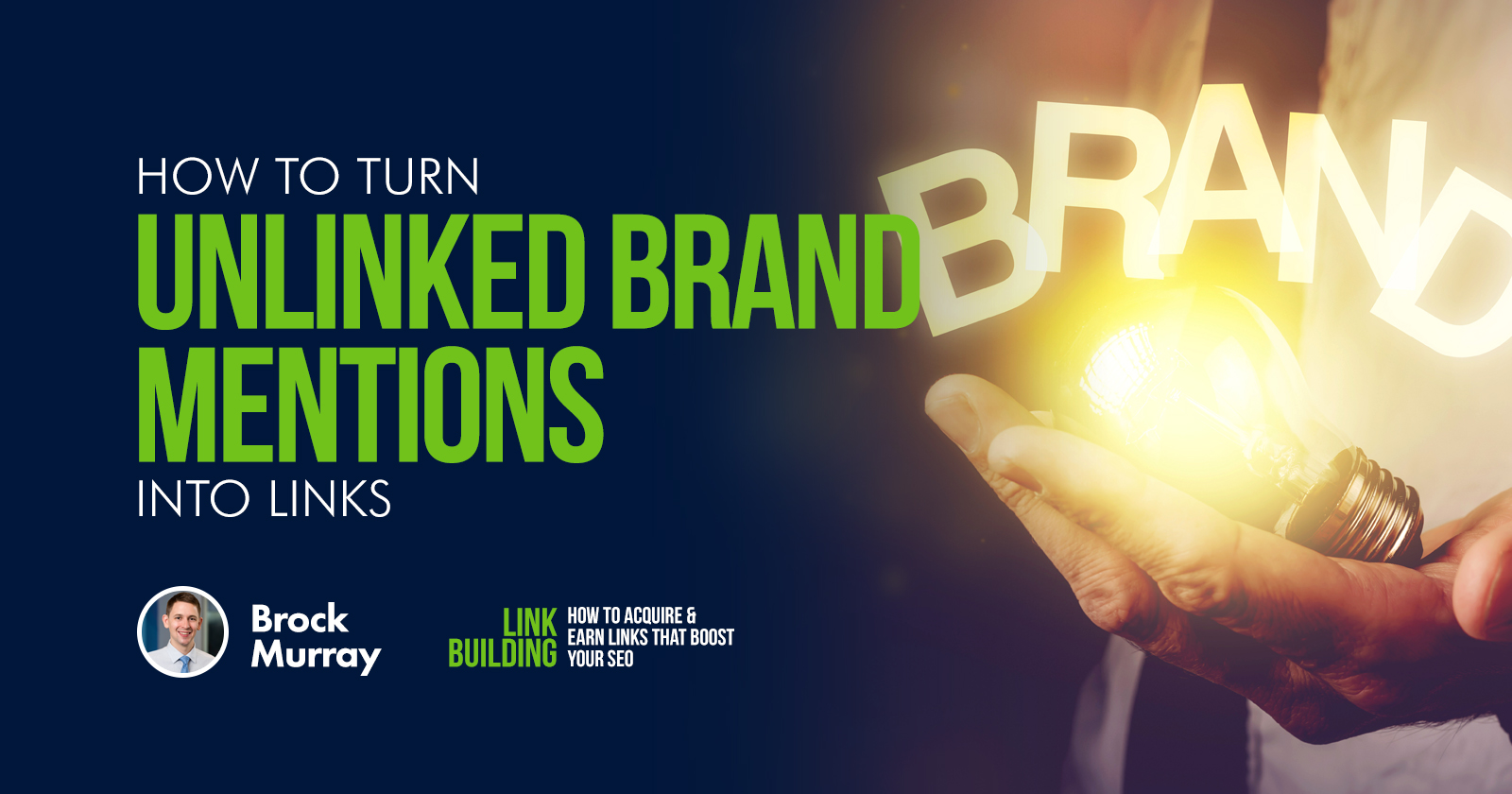Unlinked brand mentions are mentions of your brand on published sites that do not provide a link back to your website.
Backlinks are critical in developing website authority, especially within relevant communities.
While Google does give value to brand mentions, even if they are unlinked, links provide far more SEO value as the primary off-page ranking signal.
As SEO experts, we know that links can provide the value you need to be recognized as an authoritative, trusted, and relevant site.
The recognition through links from top-tier publications is what will lend credibility and authority to your website.
This is why we want to take action when we see a mention that is unlinked.
There is a simple solution to these unlinked brand mentions: ask for the link.
Having already mentioned your brand, it indicates that they find value in your product, service, or perspective, and want to share that value with their audience. This places you in an advantageous position to ask for the cherry on top.
Below is a step-by-step approach to finding these unlinked mentions of your brand and reaching out to the publisher to generate a high-value backlink.
Step 1: Research
Use a tool to scan the web for unlinked mentions of your brand.
You want to find all the links that will add value.
My personal favorite is SEMrush. BuzzSumo is another helpful resource to discover social shares of your blogs or mentions of your website.
Make sure to scan for all potential variations of your company (e.g., Search Engine Journal, SEJ, SearchEngineJournal). This will ensure that no mentions are missed.
In addition to searching for the brand name, you can search for any branded products, tools, or assets.
Also try searching for employee names, as the CEO might be referenced in an article with no link.
Expand your search by scanning for alternate spellings of your brand name, as your search tool will not catch misspelled branding.
Once you have compiled a list of unlinked mentions, next you must prioritize based on the highest SEO or PR value.
If you have a well-established brand, you might find thousands of unlinked mentions.
Though you can manually attempt to capture a link on all of these websites, the optimal strategy is to prioritize the most authoritative websites.
You can use your judgment to assess authority (i.e., Have you heard of the website? Would you be excited to have a link there?), but there are also objective metrics to assess authority.
Moz, Majestic, and Ahrefs have their own metrics to quantify URL and domain authority.
Use these metrics to help prioritize which unlinked mentions are worth the outreach effort.
Step 2: Find Contact Information
The ideal contact would be a site’s webmaster, especially if there are external links in the article but none leading to yours (for whatever reason).
If you can’t find the contact email for the webmaster on the site’s contact page, try performing a site search for the keyword “webmaster” (for example, Google search — site: https://www.searchenginejournal.com/ webmaster).
Note that this could result in many results and may prove frivolous. You can also use LinkedIn to zero in on the webmaster or someone in a related position.
Next, find either the author of the article or the website editor’s contact email to reach out.
If you’re unable to find any of the previously mentioned contact emails, then use the general information email or standard contact form.
Step 3: The Pitch
Find a reason it would benefit the webmaster to take the time and effort to insert a link.
Word your request in a way that they can clearly see that linking to your website will not only benefit you and your brand, but also provide value to them and their audience as well.
Sometimes, internal pages are easier to link to than to your homepage.
For example, if there’s a webpage (blog post or service page) that covers the topic of discussion on the page you’re trying to acquire a backlink on, it might make more sense to request a link to that specific page instead.
When asking for the link, be cordial and thank them in advance for their time. You want to avoid coming off as pushy.
If it’s an article, compliment it in a unique and genuine way. Also, be sure to thank them for including you/your company in the article.
Explain how adding the link will provide additional value to their audience.
Step 4: Follow-up
If the link hasn’t been added and you haven’t heard back, always make sure to follow up. Only stop once you hear either a yes or a no.
At the same time, don’t harass them either. It’s a fine line to walk.
If you spam them daily with the request, they’ll be less likely to want to do you this favor.
Your first follow-up should be after a few days (between 3 and 5), then after a week and a half, then every few weeks.
It might also be that the email you’re using isn’t being monitored, so see if there’s an alternative contact email you can use.
Track your outreach efforts in a spreadsheet.
You never know, you might be able to build a relationship with the more enthusiastic respondents and possibly earn a guest post or featured article.
A Strategy Example: Rebrand
If your company goes through a rebranding or if you migrate your website to a new domain, it is important to update your old links and/or branded anchor texts.
Map out and implement 301 redirects from your old domain to your new one, otherwise, your once-robust backlink profile will be scattered with broken links.
While redirects are good, they’re not as impactful as a direct link. Reach out to all of the quality domains that link to you and request they update the link.
Majestic is a helpful tool to find these links to the old domain. Provide any material they might require as well (logo, new company name, etc.)
It’s easy enough to convince the website to update the branding/backlink appropriately, as you’re pointing out an error on their website (having dated information and having broken links is bad for their site health as well).
Conclusion
Let’s say a well-recognized publication mentions your brand without a link.
You have been mentioned by this trusted source, however, the recognition ends there.
Ideally, this mention will have a link to your website as well, which helps to build awareness amongst relevant users.
While this unlinked mention does provide some benefit to your company, this four-step link building tactic allows you to leverage this recognition since Google relies on backlinks as a primary off-page ranking factor.
All in all, backlinks will determine your brand’s reputation and give your target audience relevant information – it’s a win-win.
Summary
Timeframe: This should be a quarterly process.
Results detected: The results can vary. However, once a publisher agrees to provide the backlink, it can take on average a week to get this backlink implemented.
Average links sent per month: 15-20% of outreach results in a successful placement.
Tools needed:
- SEMrush
- BuzzSumo
- Majestic
Benefits:
- Using the above tools to discover unlinked mentions of your brand and reaching out to the publisher to acquire a valuable backlink has proven to be beneficial to your SEO rankings.
- Once you transform an unlinked brand mention to a secure backlink to your site, you are adding SEO value, guiding potential customers directly to your website, and driving up the total amount of referral traffic.
Image Credits
Featured Image: Paulo Bobita




